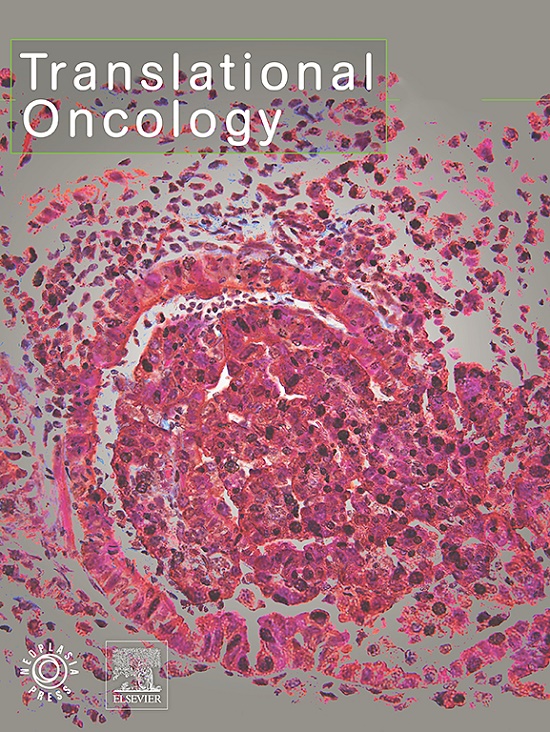Comprehensive characterization of T cell subtypes in lung adenocarcinoma: Prognostic, predictive, and therapeutic implications
IF 5
2区 医学
Q2 Medicine
引用次数: 0
Abstract
Background
T cells are crucial for immunosurveillance and tumor eradication, with their dysregulation or absence in the tumor microenvironment linked to immunotherapy resistance. In lung adenocarcinoma (LUAD), this resistance is a significant barrier to effective treatment, highlighting the need for robust biomarkers and therapeutic targets to improve clinical outcomes.
Methods
T cell-related markers were identified through single-cell RNA sequencing analysis. The TCGA dataset was used for consensus clustering to define molecular subtypes associated with distinct survival outcomes and immune profiles. A T cell-related prognostic signature was developed by integrating LUAD datasets from TCGA, GSE31210, GSE50081, and GSE68465 using 10 machine learning algorithms. Further analysis linked risk scores to immune infiltration and drug sensitivity. The role of a hub gene in CD4+ T cell function and its involvement in tumor immunity was explored through in vitro experiments and molecular biology techniques.
Results
Cluster analysis identified three LUAD subtypes, with cluster1 showing the best prognosis and immune characteristics. A Lasso + PLSRcox-based signature was a significant risk factor for predicting LUAD patient outcomes, outperforming traditional clinicopathological factors. The risk score correlated with immune microenvironment features, immune cell infiltration, and sensitivity to immunotherapy and chemotherapy. CPA3 expression was elevated in activated CD4+ T cells, particularly in Th1 cells, promoting differentiation and IFN-γ secretion. Overexpression of CPA3 enhanced tumor cell apoptosis and increased Granzyme B and IFN-γ levels, highlighting its role in immune responses.
Conclusion
We developed a powerful prognostic signature in LUAD that accurately predicts clinical outcomes and can guide immunotherapy and chemotherapy responses.
肺腺癌中 T 细胞亚型的综合特征:预后、预测和治疗意义
背景T细胞对免疫监视和肿瘤根除至关重要,它们在肿瘤微环境中的失调或缺失与免疫疗法的耐药性有关。在肺腺癌(LUAD)中,这种抗药性是有效治疗的一个重要障碍,突出表明需要强有力的生物标志物和治疗靶点来改善临床结果。TCGA数据集用于共识聚类,以确定与不同生存结果和免疫特征相关的分子亚型。通过使用10种机器学习算法整合来自TCGA、GSE31210、GSE50081和GSE68465的LUAD数据集,建立了T细胞相关预后特征。进一步的分析将风险评分与免疫浸润和药物敏感性联系起来。通过体外实验和分子生物学技术探讨了CD4+ T细胞功能中枢基因的作用及其在肿瘤免疫中的参与。基于 Lasso + PLSRcox 的特征是预测 LUAD 患者预后的重要风险因素,优于传统的临床病理因素。风险评分与免疫微环境特征、免疫细胞浸润以及对免疫疗法和化疗的敏感性相关。活化的CD4+ T细胞,尤其是Th1细胞中的CPA3表达升高,促进了分化和IFN-γ的分泌。CPA3的过表达增强了肿瘤细胞的凋亡,提高了颗粒酶B和IFN-γ的水平,突出了其在免疫反应中的作用。
本文章由计算机程序翻译,如有差异,请以英文原文为准。
求助全文
约1分钟内获得全文
求助全文
来源期刊

Translational Oncology
ONCOLOGY-
CiteScore
8.40
自引率
2.00%
发文量
314
审稿时长
54 days
期刊介绍:
Translational Oncology publishes the results of novel research investigations which bridge the laboratory and clinical settings including risk assessment, cellular and molecular characterization, prevention, detection, diagnosis and treatment of human cancers with the overall goal of improving the clinical care of oncology patients. Translational Oncology will publish laboratory studies of novel therapeutic interventions as well as clinical trials which evaluate new treatment paradigms for cancer. Peer reviewed manuscript types include Original Reports, Reviews and Editorials.
 求助内容:
求助内容: 应助结果提醒方式:
应助结果提醒方式:


